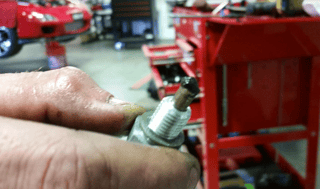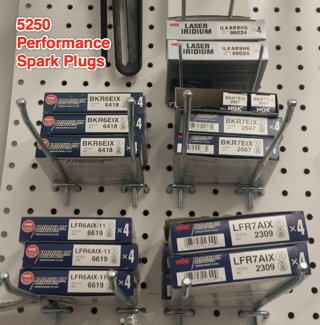 Spark Plugs | Why they need attention with your high performance car
Spark Plugs | Why they need attention with your high performance car
Every car on the road that runs on gasoline has spark plugs. Some cars even have 2 plugs per cylinder. Bust just like different cars have different motors, different motors have different spark plugs. On most cars, checking or changing your plugs is a simply DIY task. On a few cars, getting to the spark plugs requires a bit a disassembly or difficult access.
Most inline and V type engines have the plugs right on the top of the motor making access a snap.
H type and transversely mounted motors may have plugs mounted low and on the side of the motor or on the backside tight against the firewall. These plugs may be difficult to access or require the removal of the intake manifold. These types of motors are better left to the professional.
But, if you are comfortable wrenching, it can be a simple weekend project.
Once you've located and removed the plugs, it's time for an inspection. When I look at plugs from a customer's car, the first thing I check is to make sure it's the correct spark plug for the motor.
 A dash (-) followed by a number at the end of the part number on the plug usually signifies a larger than normal gap.
A dash (-) followed by a number at the end of the part number on the plug usually signifies a larger than normal gap.- Secondly, I look for physical damage and the color of the ceramic on the plug. The last thing I look at is the threads and the porcelain.
I'm looking for black carbon traces that are a telltale sign of bad spark plug wires and/or boots. If you do see obvious damage, you need to find out what caused it. Especially, if you were not expecting to find damaged plugs.
Assuming everything looks normal, it's time to pick out some new plugs. Most engines will only accept one type or style of spark plug. The thread pitch, diameter, length of threads and protrusion into the cylinder all must be correct or the plugs won't fit and serious engine damage may occur. But within a style of plug, you can change the construction material, heat level, and gap.
Forever, spark plugs were manufactured with a copper electrode with good success. Copper is a great conductor, is easy to work with, and is affordable. But copper is soft and has a low melting point, causing copper conductor plugs to wear out in as little as 10,000 miles on a high output motor.
You might have noticed that your car's manual doesn't require spark plug service until 60,000miles and even as high as 160,000 miles on some cars. This is due to advanced materials like platinum and iridium being used. These metals are very hard and have high melting temperatures while retaining good electrical properties. They simply don't wear out like copper plugs do.
While construction material is easy to understand.... fancy plugs cost more, work better, and last longer... Gap and heat range are not as straightforward. The heat range of a plug is a measure of how fast heat is conducted away from the tip of the plug, through the body and into the cylinder head.
A hotter plug stays cleaner and thus produces a better spark, but a glowing hot plug can also cause pre-ignition or detonation, which can destroy a motor in seconds. You want the coldest plug you can run without causing fouling issues. This is usually 1-2 steps colder than stock.
Gap is dependent on many factors. Compression ratio, type of fuel, how much boost, and ambient conditions can all factor into what the proper gap for your motor should be. A larger gap is good for emissions and fuel economy, but can experience "spark blowout" under high boost conditions.
Spark blowout is when the high pressure air/fuel mixture has such a high electrical resistance that the spark cannot jump the gap. It's like placing a piece of glass in the tip of the spark plug. This causes a misfire and can be damaging to the primary ignition coil or coil packs.
The cure for spark blowout is to reduce the gap if possible, or upgrade the ignition system. On a daily driven car, you do not want to go much less than a 0.020" gap or the motor will have cold starting issues and poor fuel economy.



